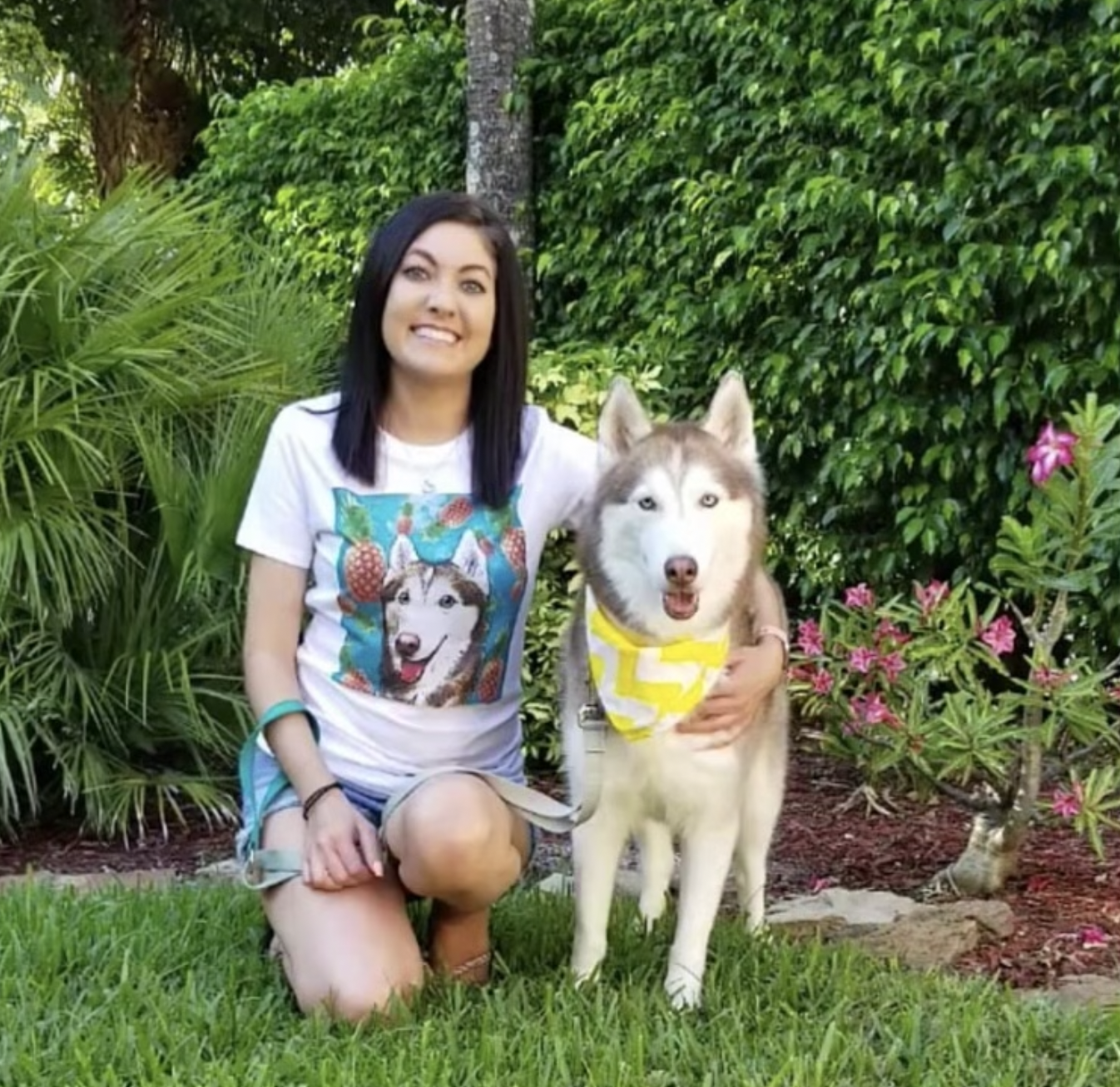For Pups With Short Attention Spans…
Bad breath in dogs is most often the result of periodontal disease caused by poor dental care, but can also be caused by mouth injuries, foreign objects stuck in the teeth, or internal ailments like kidney disease. Periodontal disease can lead to bone and tissue damage, tooth extraction, or worse, so it is very important to be proactive about dog dental care with regular checkups, brushing, and preventative treats and chews.
Wooooo doggy! Some pups just always seem to have the stinkiest breath! Like hot city garbage on a summer day, it’s powerfully repulsive and you take a hard pass on kisses. But what could possibly cause such bad breath? And more importantly—what can you do to fix it?
Are Halitosis And Bad Breath The Same Thing?
Before we dive into the leading causes of bad breath in dogs and how to treat the stinky problem, it’s important to mention that oftentimes “bad breath” is used interchangeably with the term halitosis, but there is a slight difference.
Halitosis is the medical term for stinky breath and refers to a persistent offensive odor coming from your dog’s mouth1. Persistent is the key word there! Temporary bad breath, say, from your pup sneaking into the cat’s litter box when you weren’t looking, wouldn’t be considered halitosis since it’s not an ongoing problem.
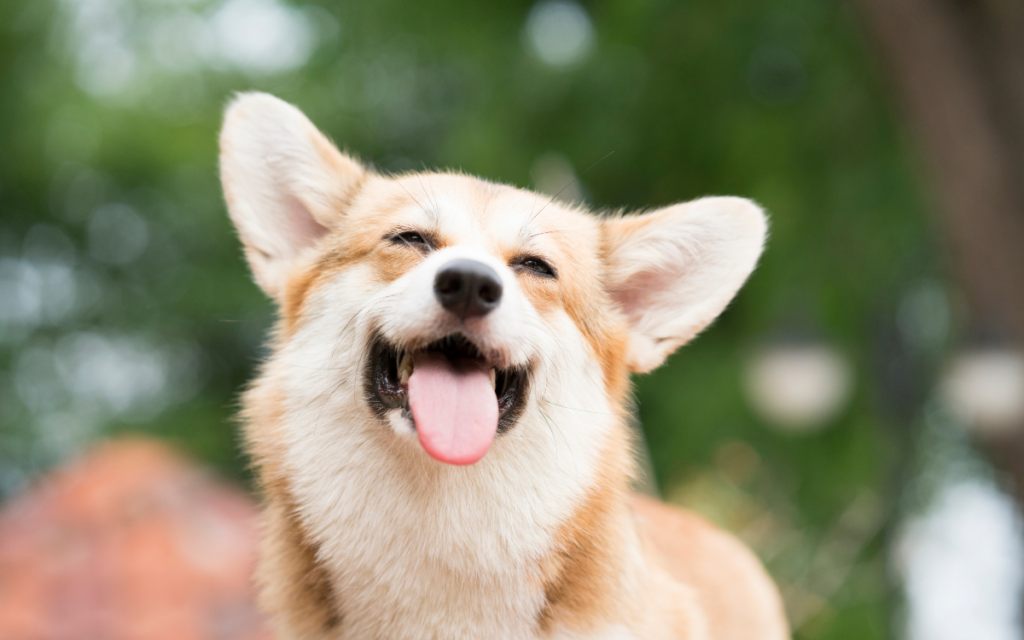

What Causes Halitosis Or Bad Breath?
There are many reasons your dog may have bad breath, including things like medication changes, leftover food stuck in their teeth, or more serious health problems like liver or kidney disease. But the most common culprit is periodontal disease, an umbrella term referring to the stages of plaque and tartar buildup in your dog’s mouth and their body’s reaction to it (like inflammation and infection, which can damage the teeth and jaw).
Periodontal disease happens in stages, beginning with gingivitis, which causes inflammation of the gums (a.k.a gingiva). As inflammation worsens without intervention, the disease progresses into periodontitis, which can be categorized into three stages of disease—early, moderate, and advanced.
If left untreated, bacteria burrow deep below the gumline, resulting in eventual bone and tissue damage6. Moderate and advanced stage periodontitis will most likely require tooth extraction to keep the mouth (and the rest of the body) healthy.
Periodontal disease is a painful condition, especially in advanced stages when the teeth and gums begin to decay. It’s very important to have your dog examined by a veterinarian, who can determine whether a professional cleaning or other steps need to be taken to preserve their overall health.
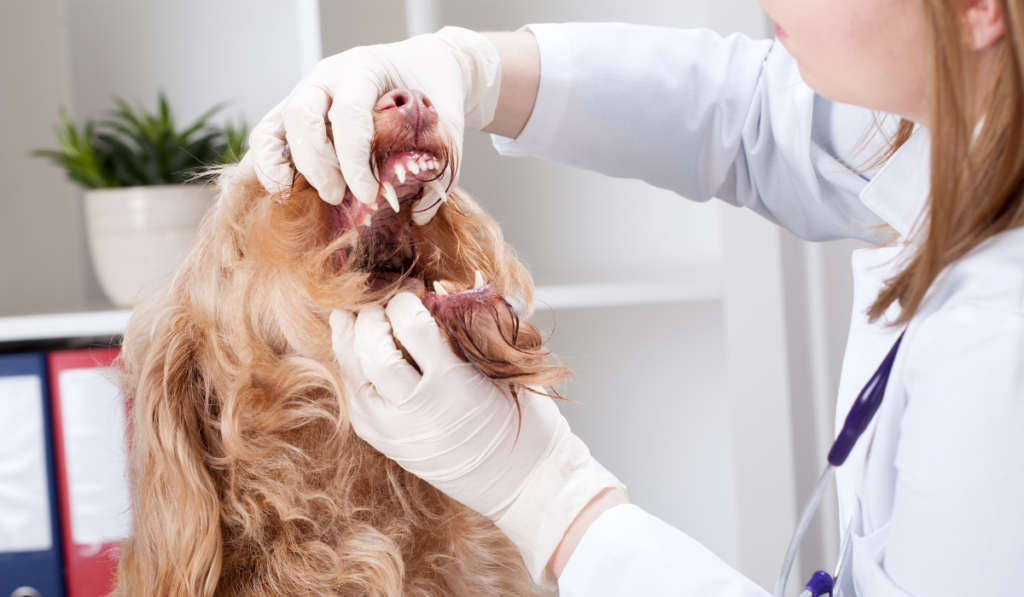

Other Causes of Halitosis Or Bad Breath
Although it is the most common cause for halitosis, periodontal disease is not the only possibility. Here are some other considerations:
- Anything causing injury or tissue disruption in the mouth, such as growths or cuts
- Foreign material (like a piece of your underwear stuck between your naughty pup’s teeth)
- Diseases elsewhere in the body can cause metabolic changes that affect the smell of the breath (eg, kidney disease)
- Skin diseases (especially anything affecting the face and lips) or stuff caught in long haired mustaches
- Bad-smelling dietary components (is your dog a poop eater?)
In addition to halitosis, here are some additional signs to watch for that may signal something isn’t right, which often come hand-in-hand with halitosis:
- Pawing at the mouth
- Dropping kibble while eating1
- Not letting you get close to take a look in their mouth
- Bleeding gums
- Discolored teeth
- Excessive drooling
- Missing teeth
- Hardened, brown/grey/yellow stuff on the surface of the teeth (this is calculus, and it houses lots of bacteria)
These are all clear signs that it’s time for a vet visit, but sometimes halitosis is the only noticeable symptom to alert you to something more serious, like advanced dental disease.
Related Article: The 4 Stages Of Periodontal Disease In Dogs: A (Not So Gross) Visual Guide


Are Certain Breeds Prone To Halitosis Or Bad Breath?
A number of factors influence whether a dog may be prone to conditions leading to halitosis. Genetics may play a role, but they aren’t the whole picture. The following can contribute as well:
1. Overcrowded Teeth
Brachycephalic (flat-faced) breeds and small breed dogs often struggle with overcrowded teeth. This leads to areas where stuff gets stuck, or bacteria can wiggle in. Beyond just the smell of old dog food stuck in the mouth (ew), this overcrowding effect accelerates bacterial growth and dental disease4.
2. Retained Baby Teeth
Some breeds, especially toy and mini breeds, are prone to retaining their baby teeth. Baby teeth (a.k.a., pointy demon fangs) should normally be pushed out by the emerging adult tooth. Sometimes, though, the baby tooth holds on and you end up with two teeth occupying the same parking spot in the mouth. This causes a lot of problems over time, including trapping material between the two teeth, inevitable dental disease, and compromising of the health of the adult tooth. All of that = bad breath.
3. Abnormal Bites And Resulting Soft Tissue Trauma
Dogs with abnormal bites (underbites, overbites, cross bites) are more likely to have teeth coming into contact with their gums, tongue, or the roof or floor of their mouth. Repeated, consistent contact like that leads to non-healing ulcers in those locations. Not only is that a recipe for stink (think old blood and dying tissue), but it’s also super sad. Luckily, the solution is pretty straightforward—your vet can remove the problem teeth and your dog will have instant relief!
4. Hairy Mouth
To make a brachycephalic (flat-faced) dog, the upper jaw has to be compressed. The wavy tissues on the roof of the mouth, called palatal rugae, end up compressed as well.
Imagine a towel on the floor with some little wrinkles in it (that’s a normal mouth). What happens when you push the two ends of the towel together? The folds of the towel get way deeper and dramatic—that’s the roof of a brachycephalic mouth.
So, what? Well, those deep folds are really good at catching and holding material like hair, which will get verrrry stinky over time. Vets call that “hairy mouth.”
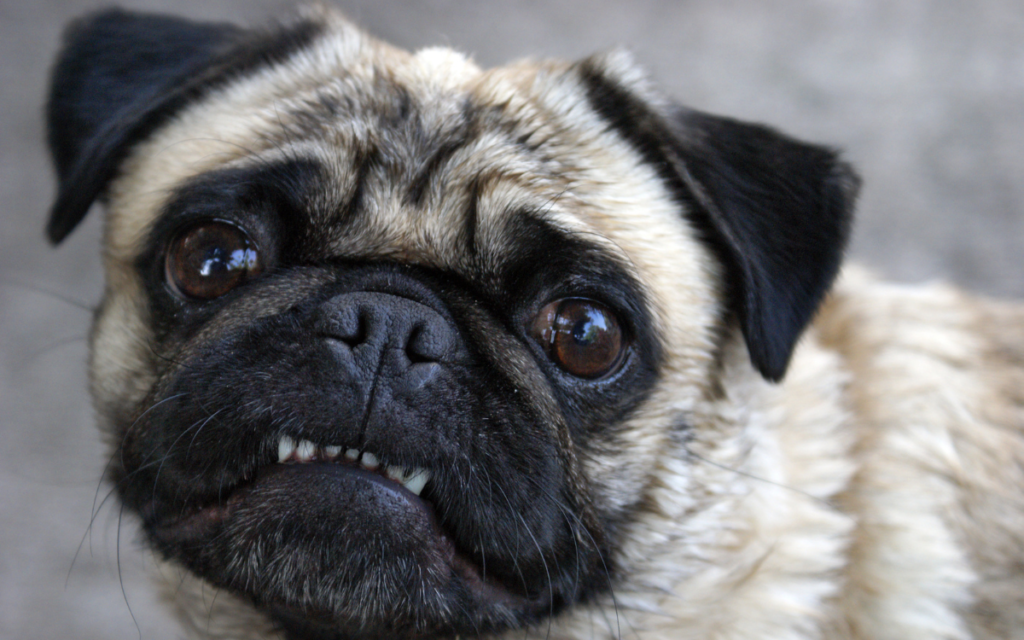

How Do I Fix My Dog’s Bad Breath?
There are two sides to that coin—prevention and treatment.
1. Brush Your Dog’s Teeth (Prevention)
Brushing your dog’s teeth daily is the best way to keep their breath fresh2. We can train our dogs to do a lot of cool tricks, but using a toothbrush to clean their own teeth just doesn’t seem to be catching on (much to our disappointment). So we need to do the dirty job for them.
Here are a few very important points to keep in mind for brushing your dog’s teeth:
- Make sure their teeth are healthy before starting (ask your vet!). Tooth-brushing is preventative care and will not “fix” existing dental disease. More importantly, toothbrushing can hurt if there is already dental disease present. We don’t want to cause pain or harm, and we don’t want our dogs to learn to hate tooth-brushing.
- To get results (keep teeth clean) you need to brush your dogs’ teeth at least every other day (ideally every day).
- Gradual, reward-based introduction of tooth-brushing can make this a positive experience for everyone. Doggie toothpaste tastes delicious (according to pups) and can make this process feel like a weird way to get a treat. Here’s a link from the American Veterinary Medical Association for instructions on how to do this.
- Routine can be helpful with getting your dog in the habit of cleaning those pearly whites. For example, after brushing your teeth and before going to bed in the evening, take care of your dog’s teeth taken as well!
- This should never ever be a battle between you and your dog. If you only get the front teeth done before they say “enough!,” that’s totally ok! Give praise and snuggles, tell them how good they are, and try again the next day. We like to punctuate a tooth-brushing sesh with a tiny extra “free” lick of yummy toothpaste.
Check out these tips and tricks to help make brushing their teeth a little easier along with choosing a dog-safe toothpaste that will make a bigger difference than brushing alone.
Important: Never brush your dog’s teeth with human toothpaste! They often contain xylitol, which is highly toxic to dogs.
Related Reading: What Is Xylitol And Why Is It So Dangerous For Dogs?
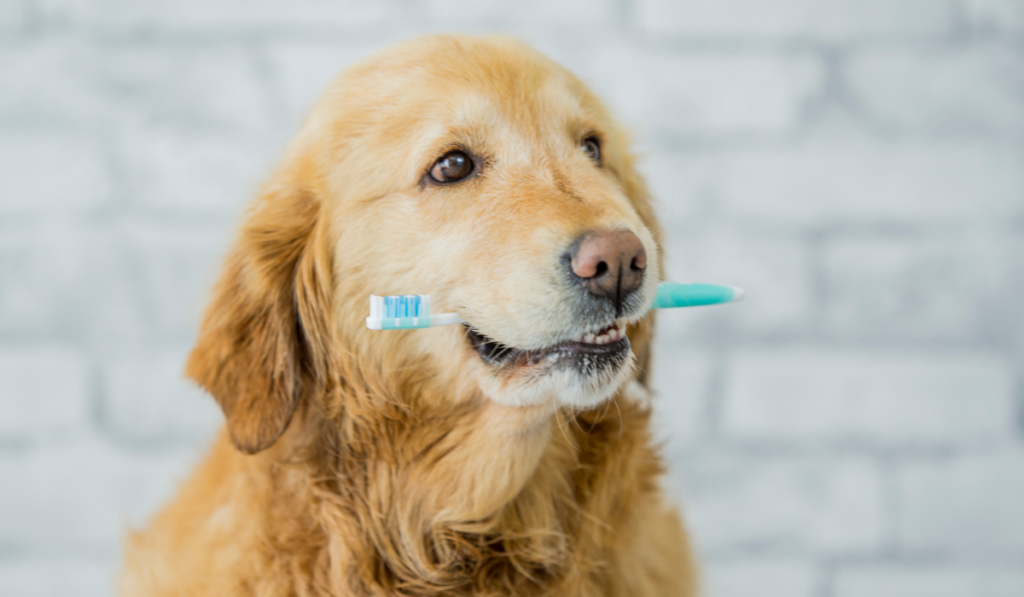

2. Give Your Dog Daily Dental Chews (Prevention)
Let’s be honest, some dogs just DO NOT tolerate tooth-brushing. We’ve been there! Luckily, research shows that giving your dog daily dental chews reduces plaque and tartar buildup, lessens the likelihood of gingivitis, and improves the overall bad breath and sulfur smells associated with halitosis3.
Dental chew treats work by gently brushing away plaque buildup and food particles on your dog’s teeth as they chew and sink their teeth into the treat.
If you’re looking for options in this category, check out BARK Bright, a combination of dental chews and toothpaste to make this experience effective & delicious.
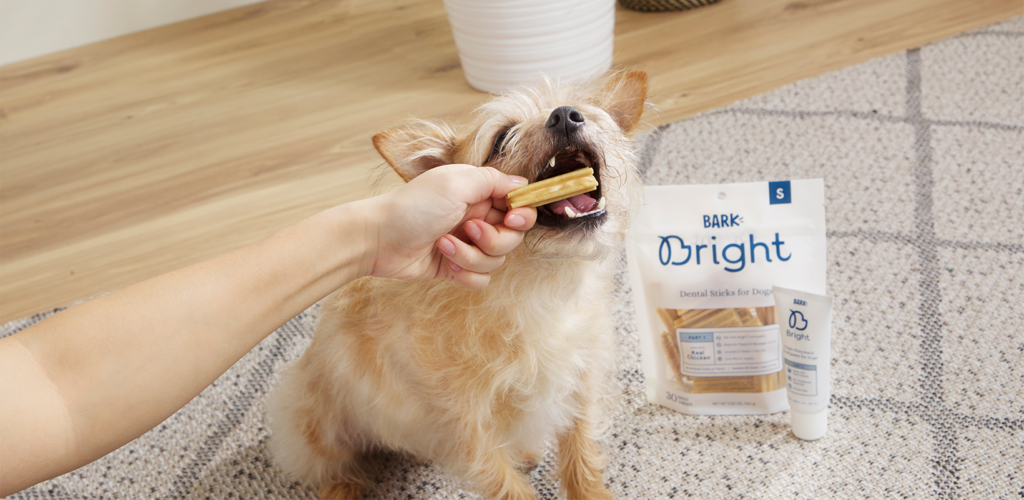

3. Talk To Your Vet About Specifically Formulated Dental Food (Prevention)
Studies show that feeding dogs kibble specifically formulated for dental health fights off bad breath and keeps teeth in good shape more effectively. Manufacturers usually develop this type of food with larger, more abrasive and fibrous kibble that acts like a toothbrush, scraping plaque from the teeth. Evidence suggests that dental formulated food reduces plaque and gingivitis by up to 39% after six months compared with dogs who were fed regular dry food5.
Other foods made for dental health may include minerals such as calcium and fluoride, or enzymes that help break down bacteria.
4. Limit Unauthorized Snacking (Prevention)
If you’ve already confirmed your dog’s bad breath isn’t caused by a health issue, “puppy proof” your house (yes, even for the adult puppies!) and eliminate or hide the sources of bad breath-causing “snacks.” That means the cat’s litter box, diaper bins, garbage cans, or anything mysterious they shouldn’t be eating in the yard.
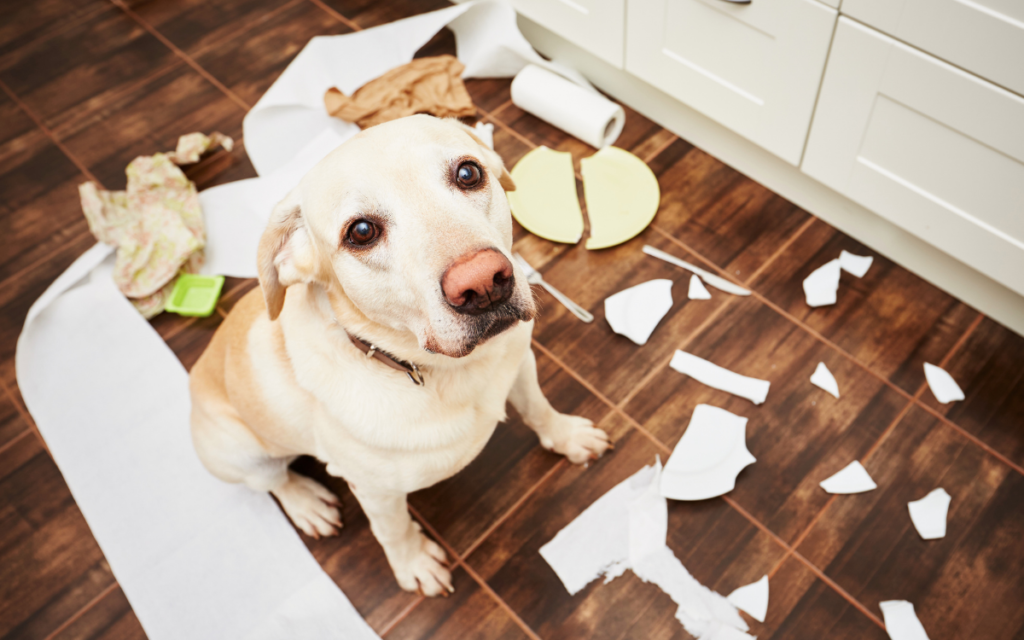

5. Treat Your Dog’s Dental Disease
If your pup has existing dental disease, the hands-down best way to address it is to get them a professional, veterinary dental cleaning and treatment. Veterinarians refer to this as “comprehensive oral health assessment and treatment” (COHAT), and perform it under anesthesia.
What Happens During A Dental Cleaning?
Basically, the COHAT involves everything that you get done at the dentist: x-rays, probing, and deep-cleaning the teeth. Vets have to use anesthesia because no dog on the planet will stay perfectly still (or calm and comfortable) for all of that stuff! Plus, if their doc discovers advanced disease affecting any teeth, they will probably need to be extracted (and under anesthesia, your pup will be none the wiser!).
Repairing any issues in the mouth and extracting problem teeth have an extraordinary impact on quality of life for your pup. Plus, a dog who had dental disease can often start a tooth-brushing habit a few weeks after their COHAT (as long as their vet gives the green light).
How Often Do Dogs Need Dental Cleanings?
Professionals recommend COHATs for most dogs on a regular schedule. Since every dog is different, talk to your vet about how often they recommended these for your pup.
Note: Anesthesia-free dental cleanings are not the same thing as a COHAT. Because dogs are awake, the cleaning can only remove calculus from the crowns of the teeth, but cannot assess the health of each tooth (you need x-rays and probing for that), clean below the gumline, or extract problem teeth. Since most disease in dogs is below the gumline, a COHAT is the better choice if safe for your pet. Please ask your vet for advice specific to your pup on this topic!
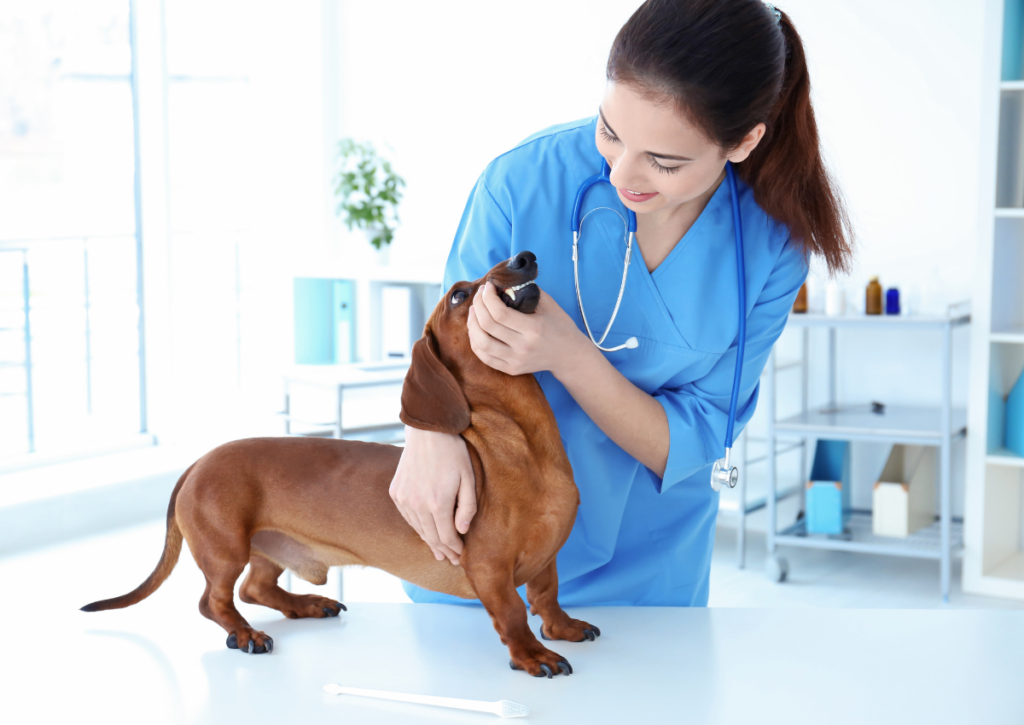

More Ways To Treat Halitosis or Bad Breath
The jury is still out on these additional methods for improving halitosis. Researchers haven’t conducted enough studies to confidently state proof of benefits, but that doesn’t mean that won’t change in the future!
Talk To Your Veterinarian About Probiotic Supplements
Although numerous studies exist on the benefits of probiotics for oral health in humans, the research on using probiotics to help treat dental disease and halitosis in dogs is still very limited currently. Have a discussion with your veterinarian if this an idea you want to explore, because it’s important to take other aspects of your dog’s health into consideration when introducing new (good) bacteria into their body.
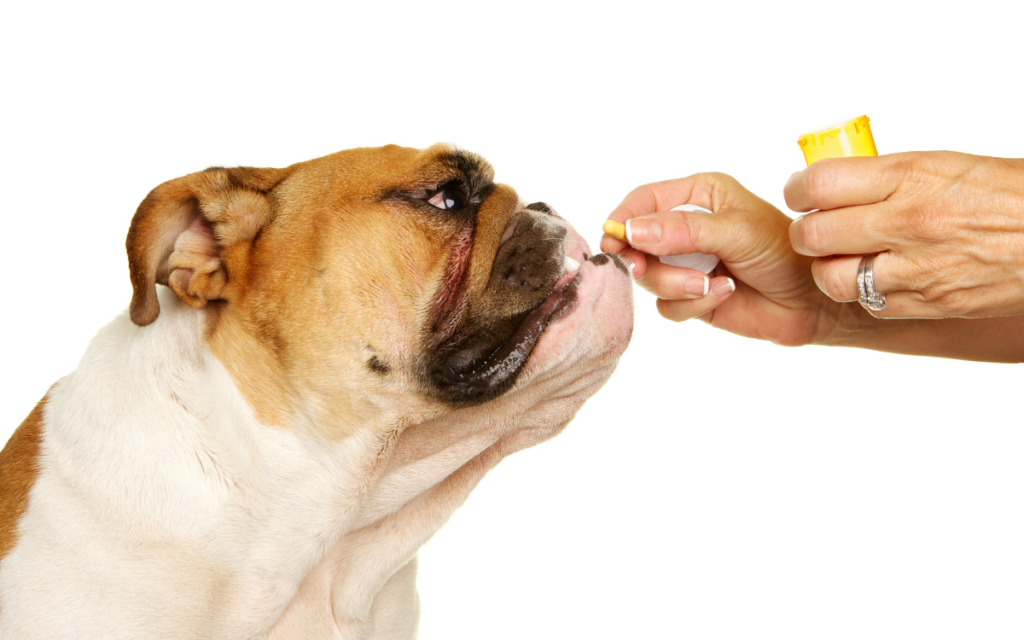

Be Cautious About Home Remedies
We like to make sure we’re giving our dogs the safest ingredients and treatments, but some herbal and home remedies that are safe for humans can be toxic for dogs. There also just isn’t enough evidence out there yet to indicate herbal remedies actually improve bad breath2.
This article has been reviewed by Margo Hennett, DVM.
Margo Hennet, DVM, cVMA, and veterinarian at BARK is a canine nutrition, health, & wellness connoisseur. She has a combined 10 years of experience in clinical medicine, research, and education—that’s 70 dog years of know-how—and graduated from Colorado State University as a Doctor of Veterinary Medicine. She completed specialized training in internal medicine prior to working as a general practitioner in Colorado, has authored peer-reviewed publications and textbook chapters, holds certification in veterinary medical acupuncture, and is a member of the American Academy of Veterinary Nutrition and American Veterinary Medical Association.
Sources
1Bellows DVM, DAVDC, Jan. “Bad Breath in Dogs and Cats.” Veterinary Partner, 21 June 2016, https://veterinarypartner.vin.com/default.aspx?pid=19239&id=4951287.
2Beynen, Anton C. “Diet and Doggy Breath .” Research Gate, 2017, https://www.researchgate.net/profile/Anton-Beynen/publication/320146438_Beynen_AC_2017_Diet_and_doggy_breath/links/59d0ae000f7e9b4fd7f9fcb5/Beynen-AC-2017-Diet-and-doggy-breath.pdf.
3Quest, Bradley W. “Oral Health Benefits of Daily Dental Chew in Dogs.” Journal of Veterinary Dentistry, U.S. National Library of Medicine, 2013, https://pubmed.ncbi.nlm.nih.gov/24006717/.
4Gardiner, John. “Halitosis in Dogs.” Animal Health Topics , UC Davis: Veterinary Medicine, 11 Apr. 2019, https://healthtopics.vetmed.ucdavis.edu/health-topics/canine/halitosis-dogs.
5Logan, Ellen I, et al. “Effects of a Dental Food on Plaque Accumulation and Gingival Health in Dogs.” Journal of Veterinary Dentistry, U.S. National Library of Medicine, 19 Mar. 2002, https://pubmed.ncbi.nlm.nih.gov/11985120/.
6Reiter, Alexander M. “Periodontal Disease in Small Animals .” Merck Veterinary Manual, Merck Veterinary Manual, 2016, https://www.merckvetmanual.com/digestive-system/dentistry/periodontal-disease-in-small-animals.
7Sharpe, Sara. “Dental Products for Pets: Globalpets.” Globalpets, 4 Apr. 2018, https://globalpetindustry.com/article/dental-products-pets.

